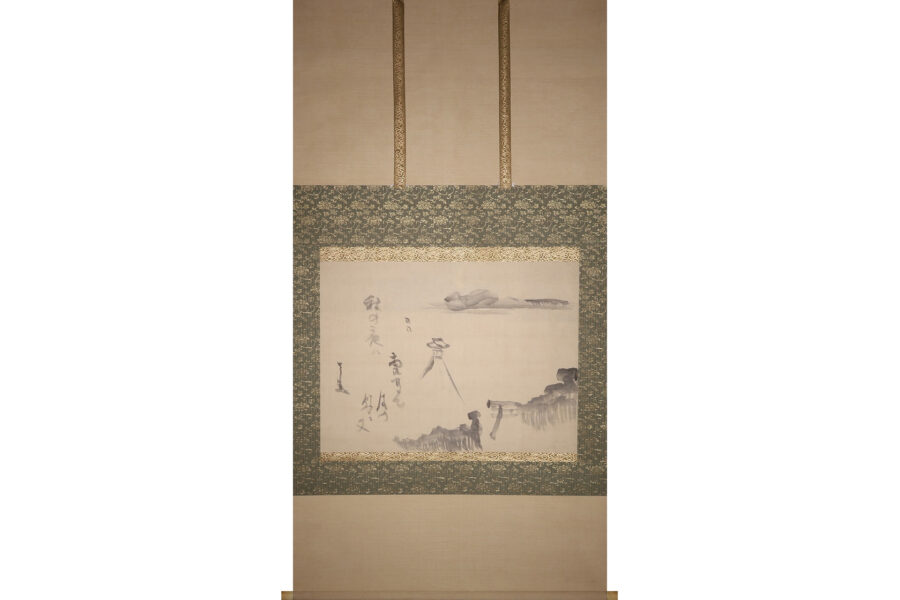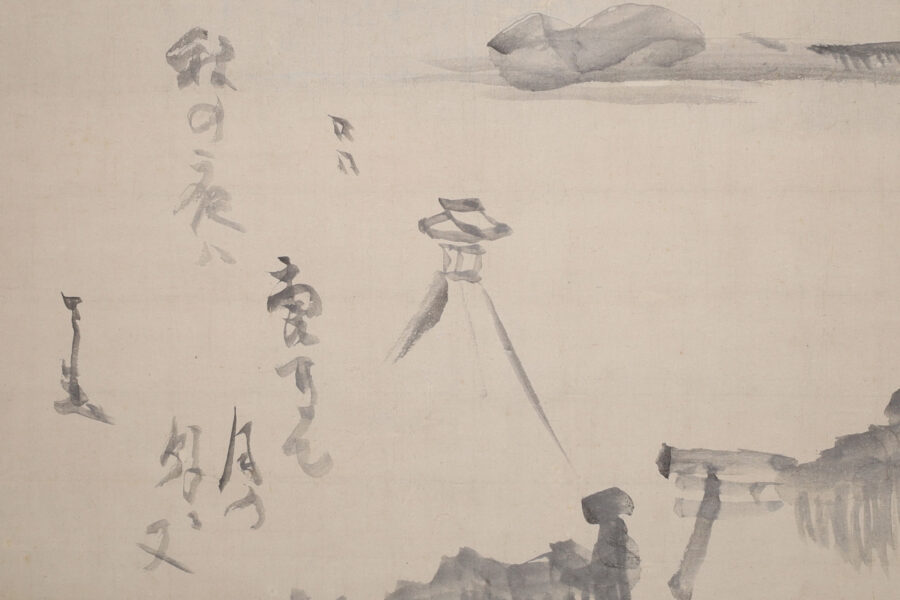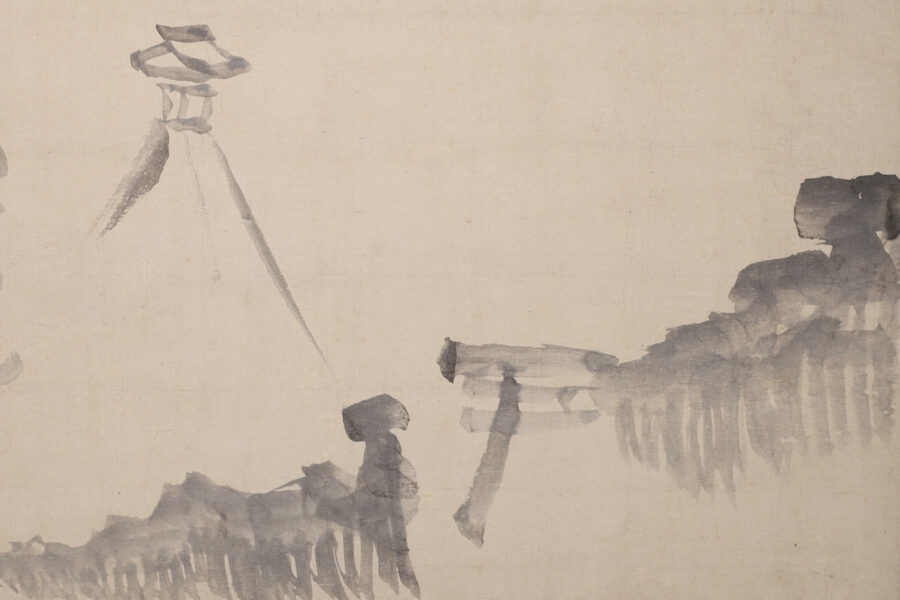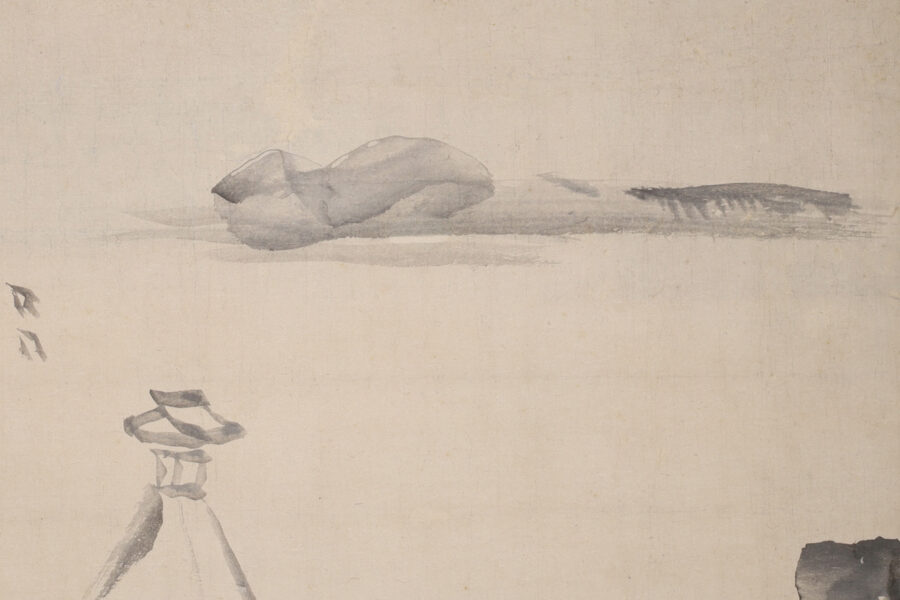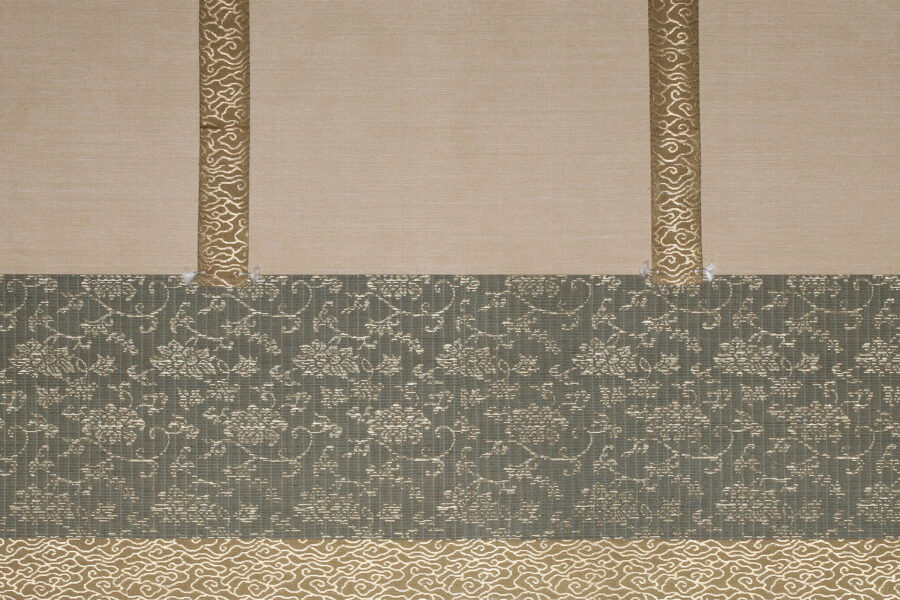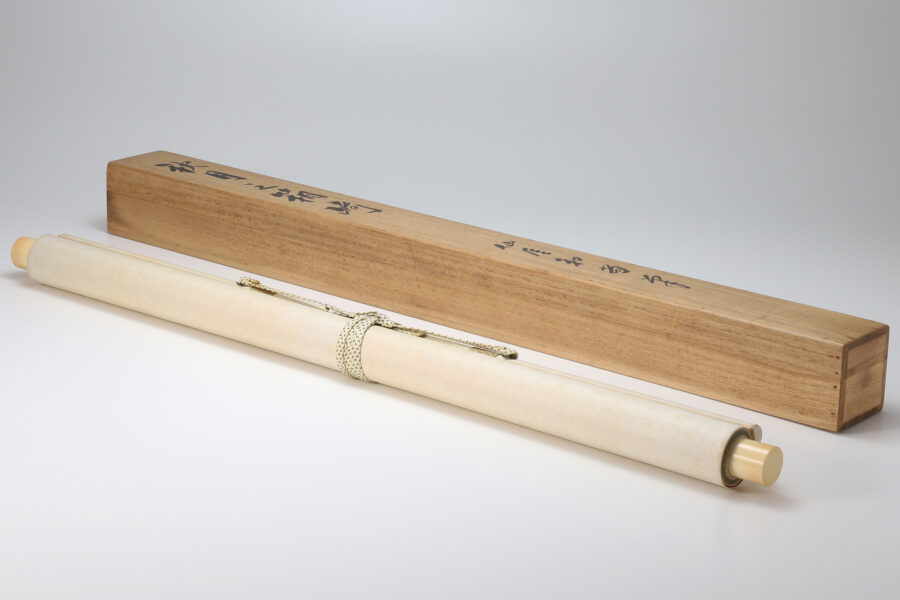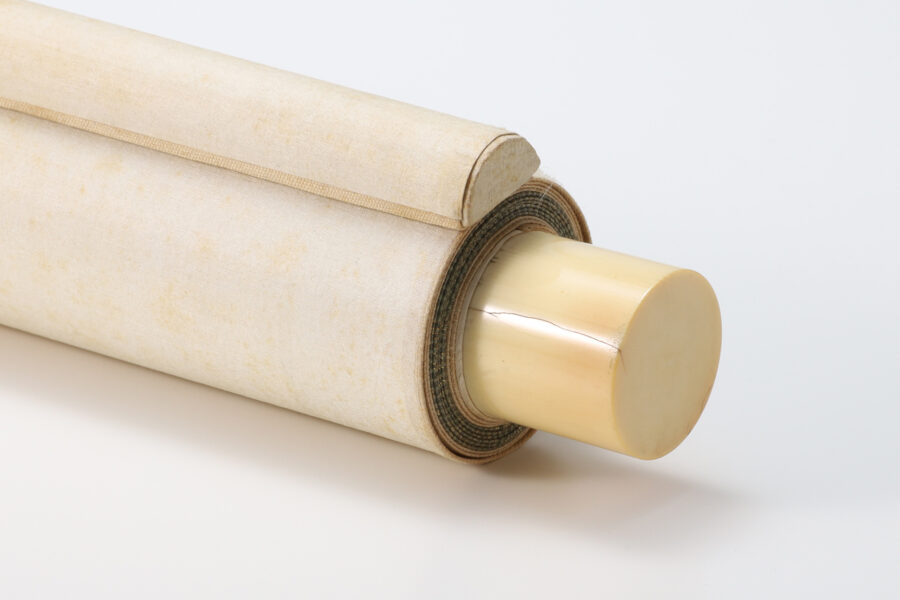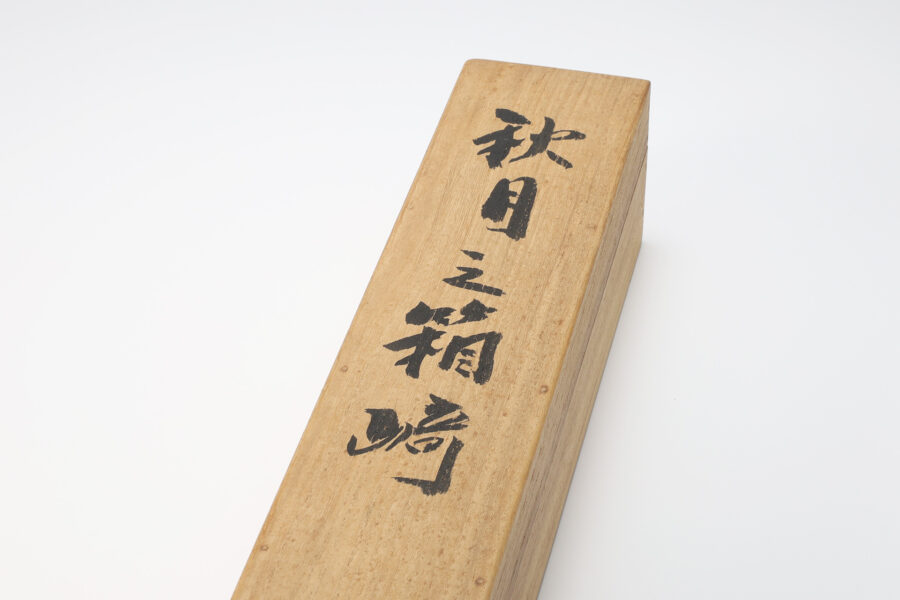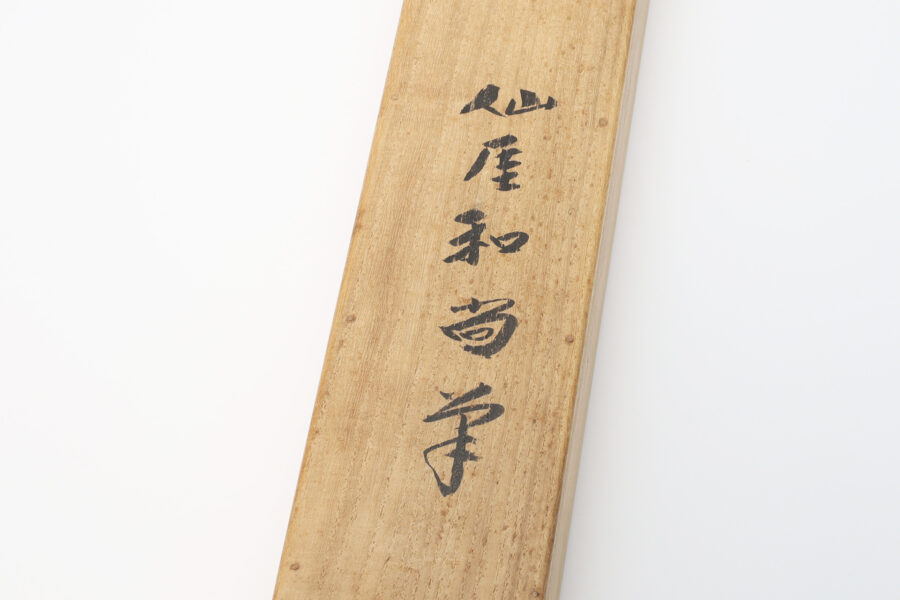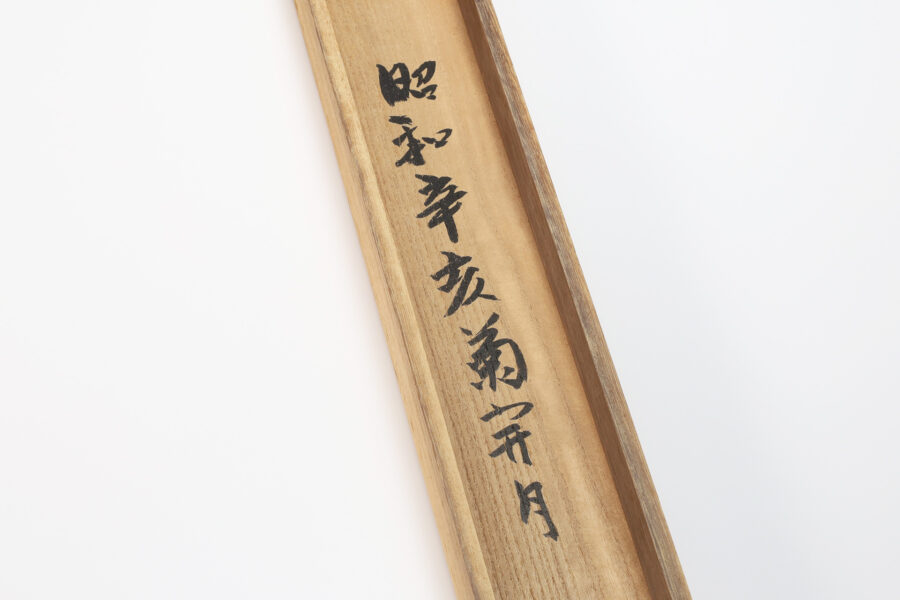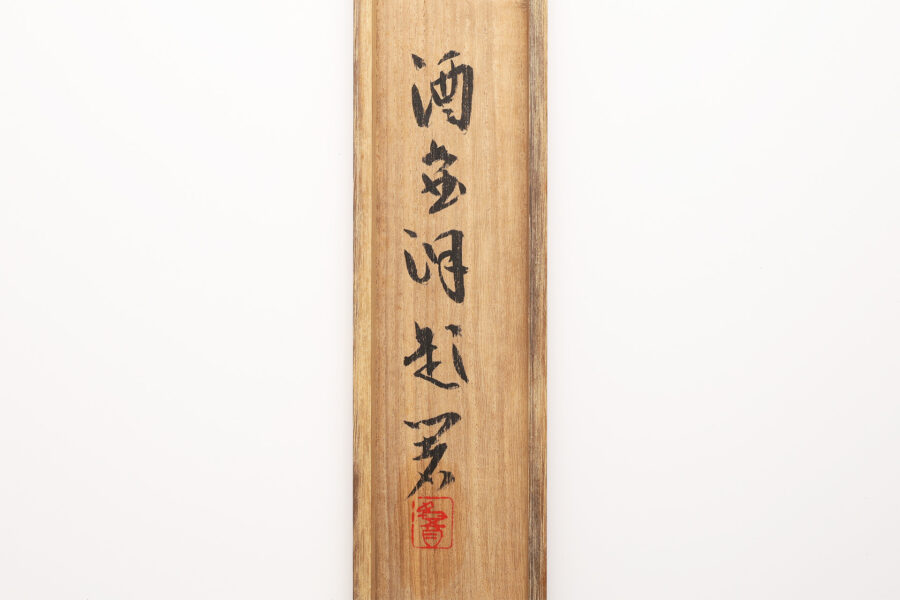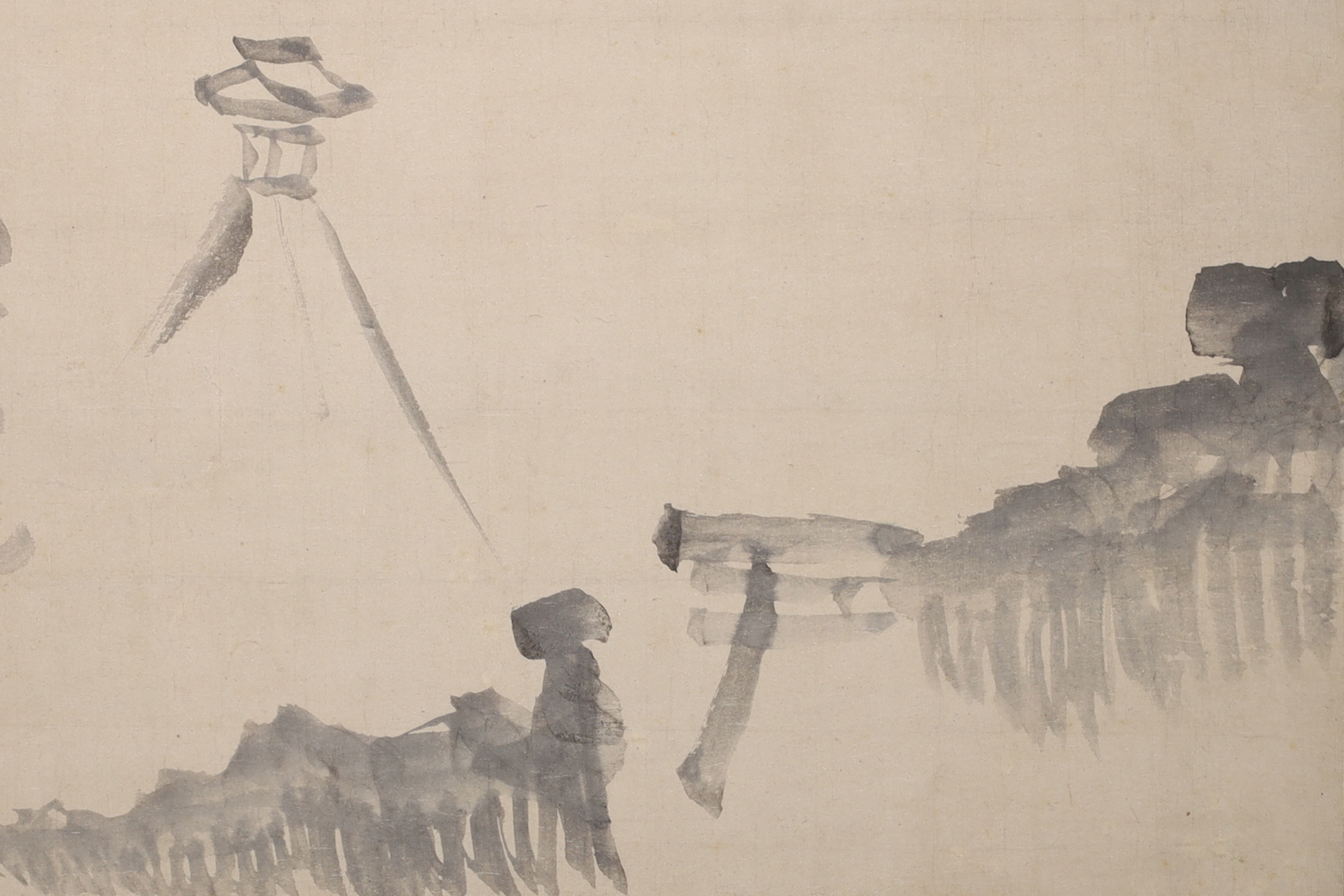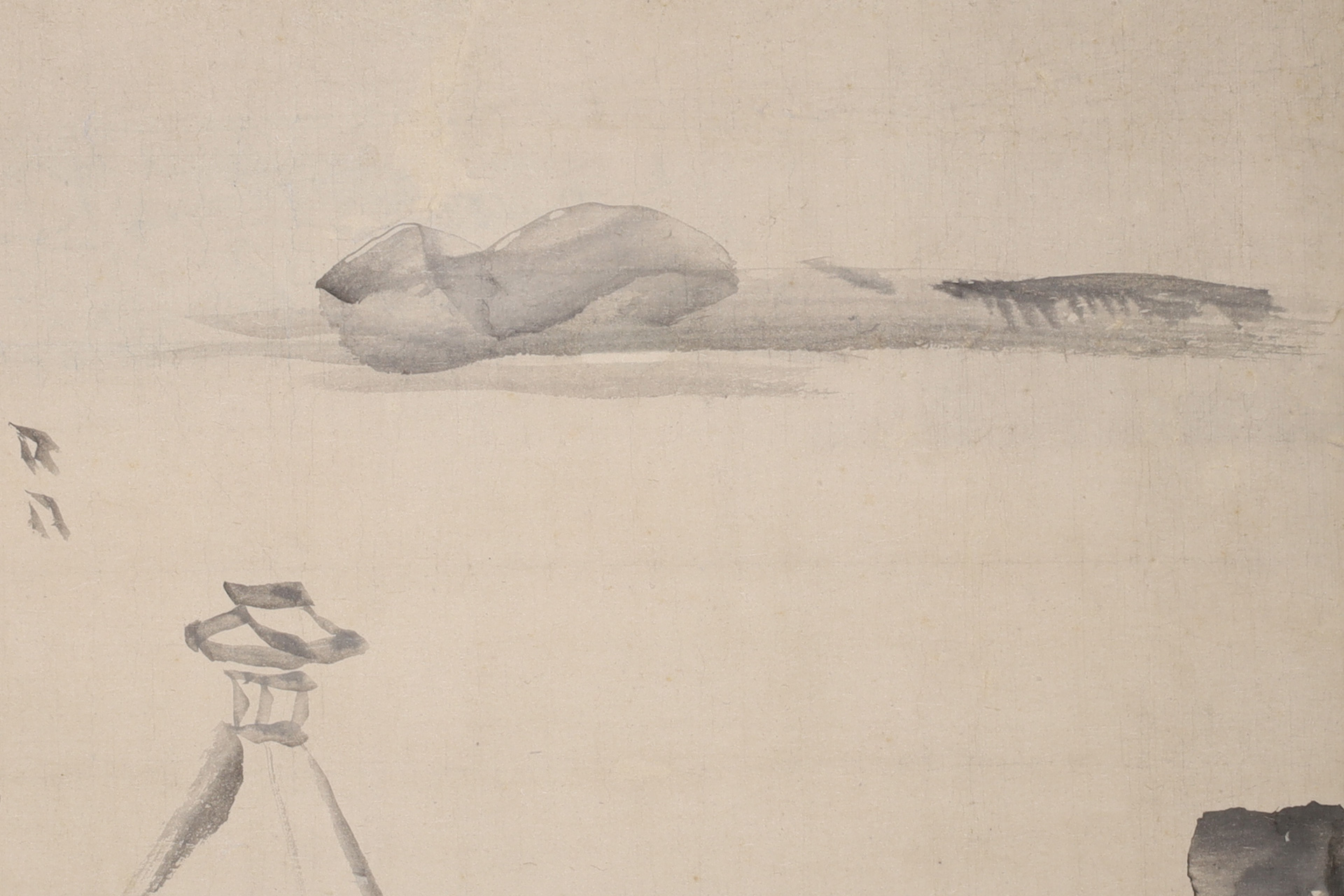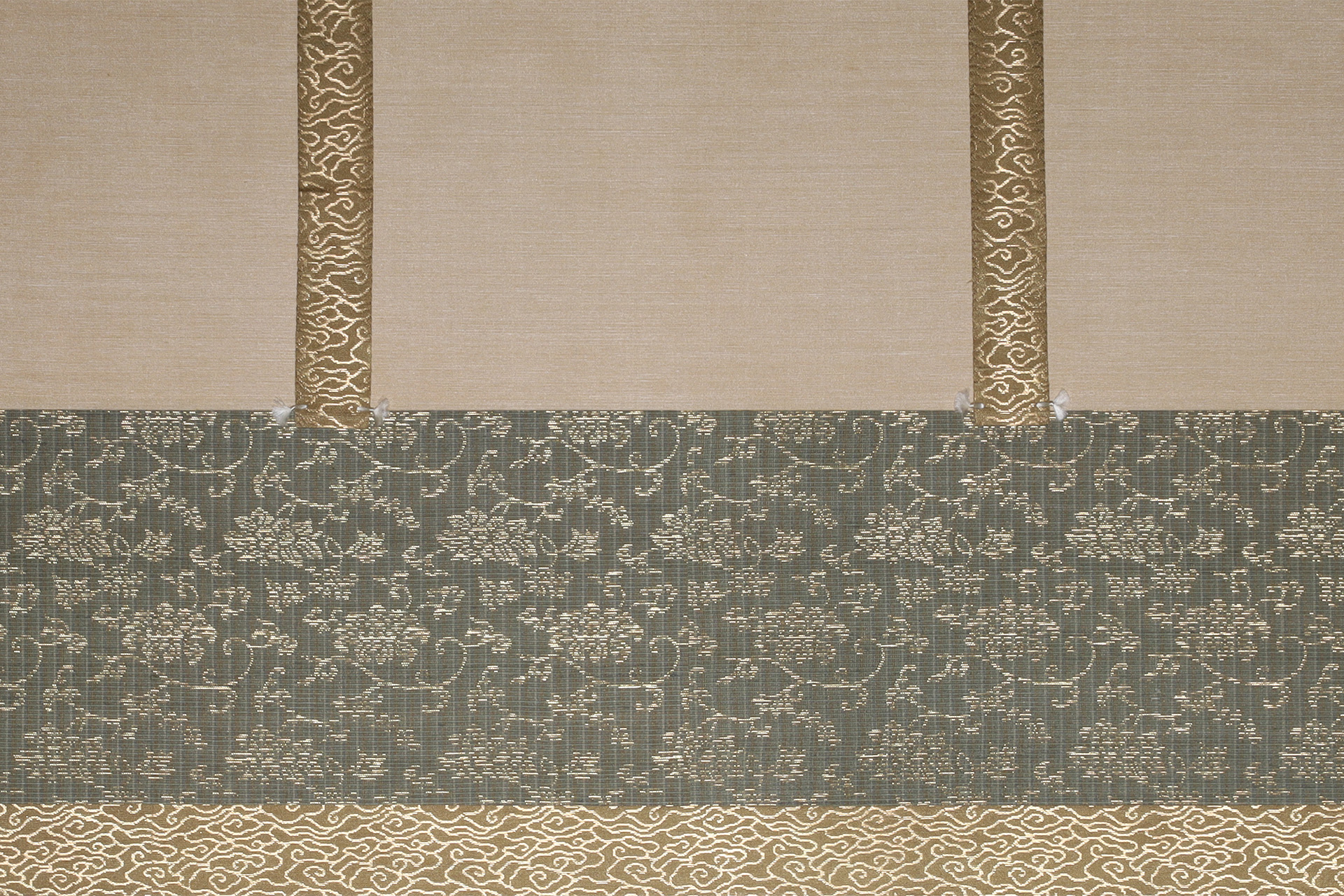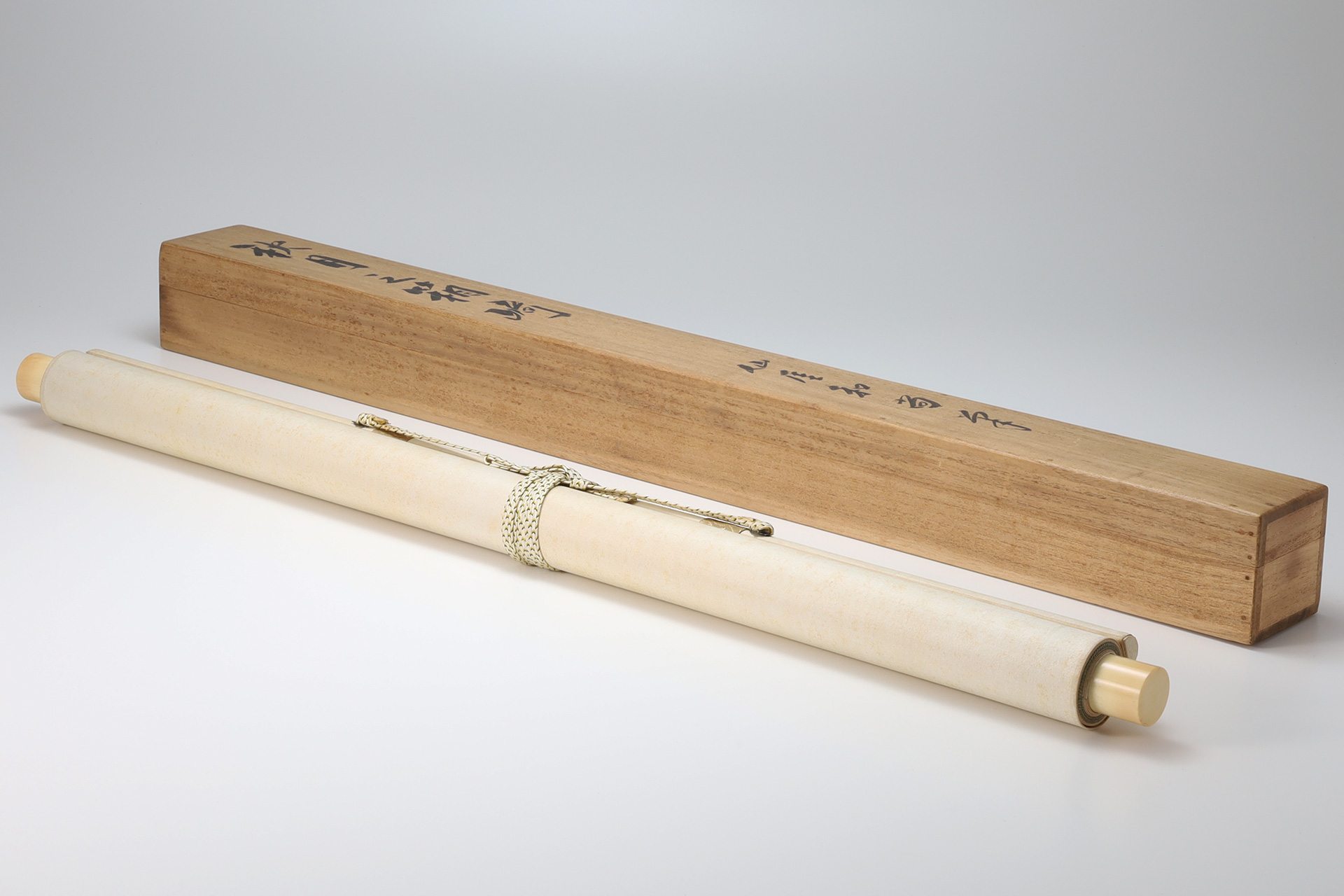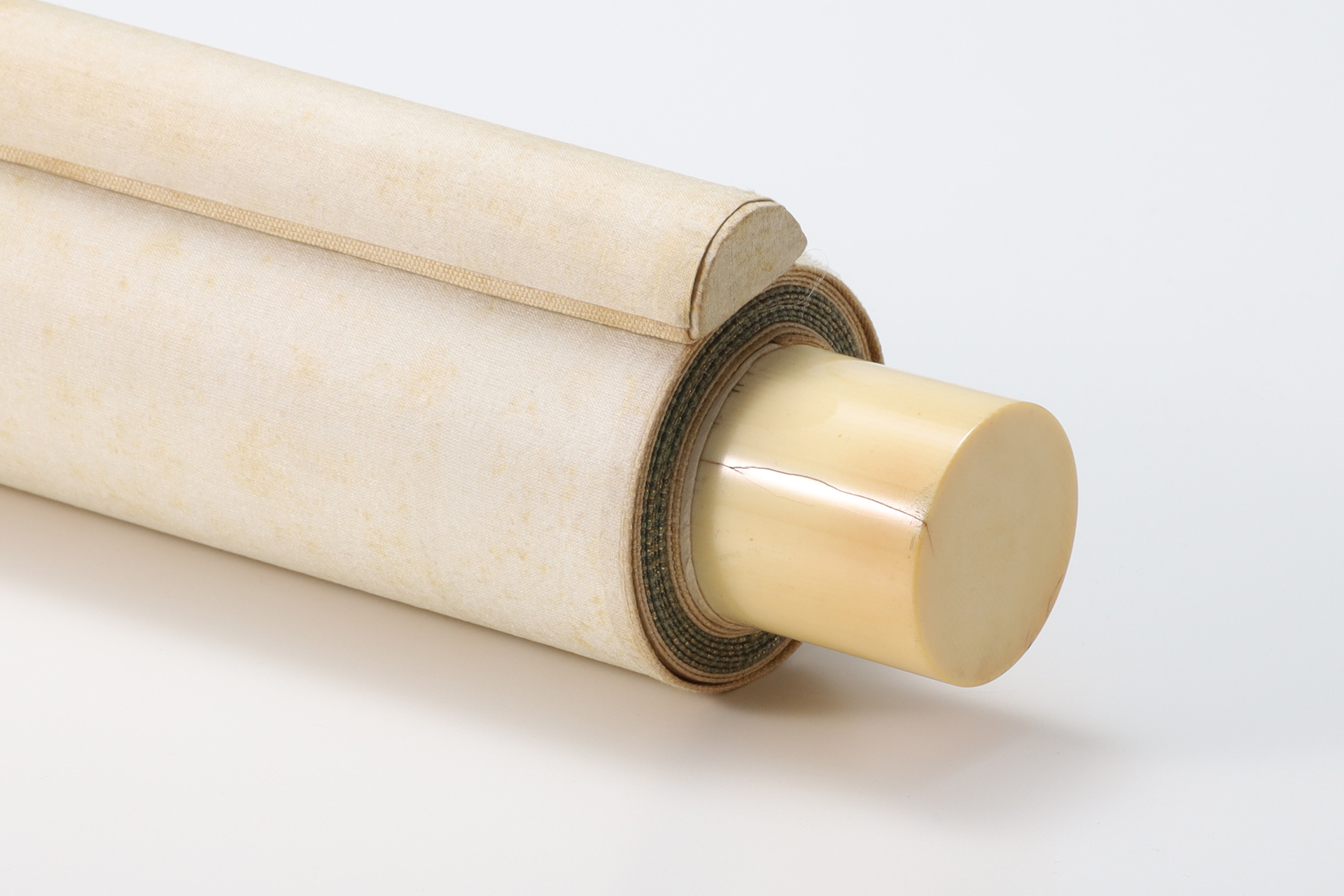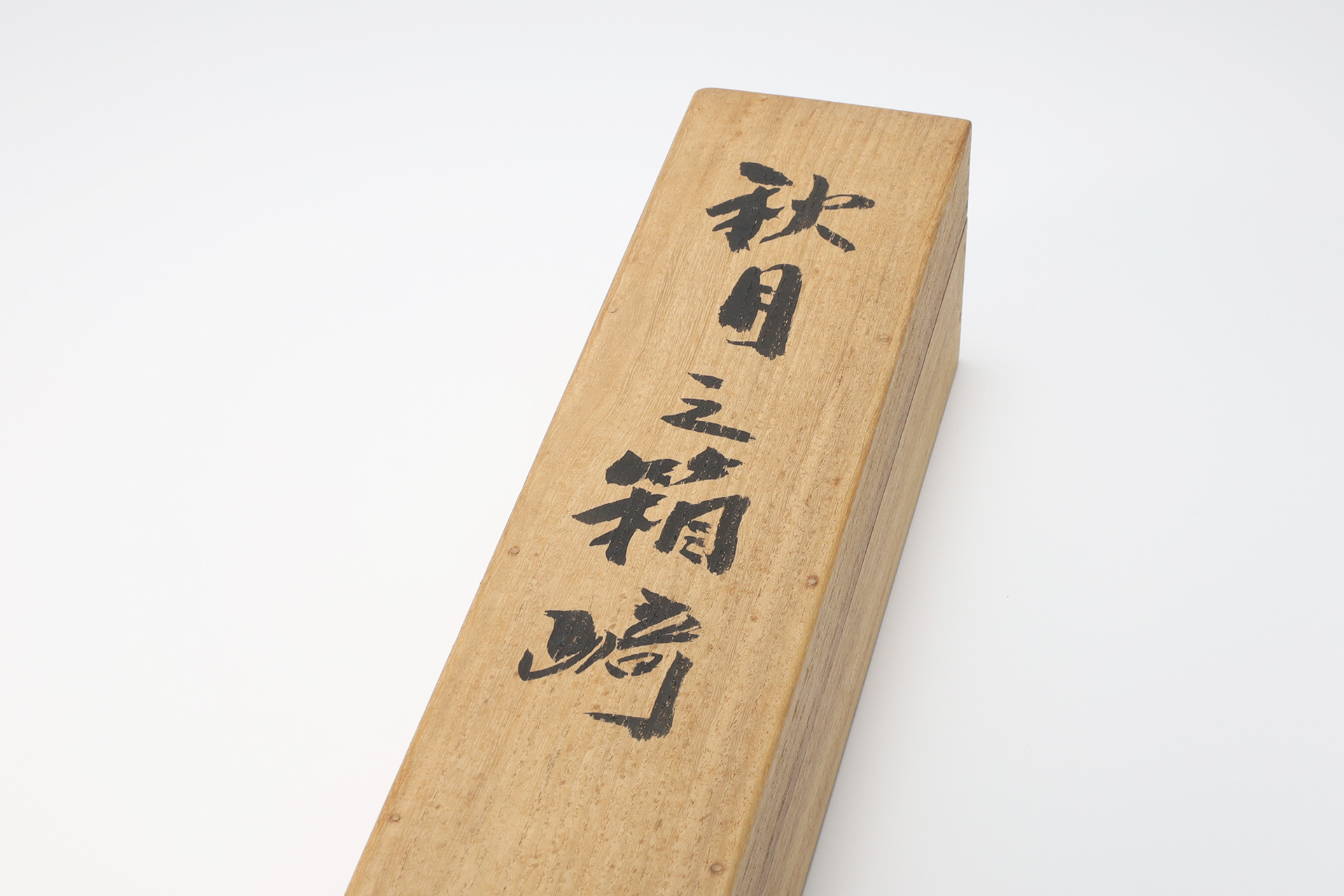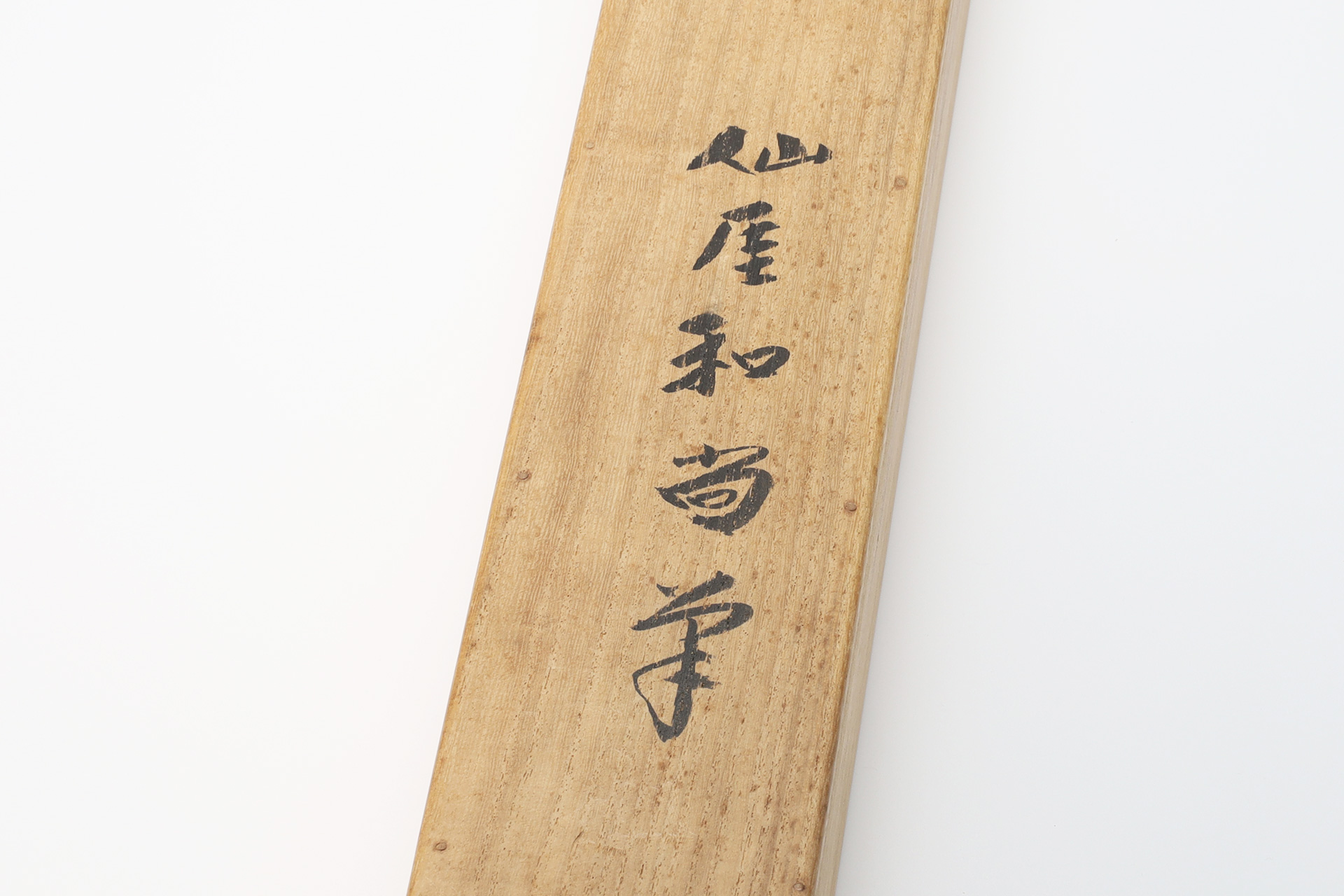This work is based on hakozaki beach, famous for its beautiful white sand and green pines. From here, you can see the torii gate of hakozaki shrine in the pine grove, lighthouse, sailing boats, and the view of uminonakamichi and shikanoshima that stretches out across hakata bay, and beyond that you can imagine the vast chinese mainland.
Inquiry
- Product Code
- 240402-2
- Artist
- Sengai Gibon
1750-1837
- Paper Size
- (Vertical)44.0×(Width)59.0cm
- Hanging Scroll Size
- (Vertical)143.0×(Width)74.2cm
- Description
- Paulownia Box(Miyake Syukodo Appraisal)
- Provenance
- Hakata and Sengai, Miyake Syukodo Author, Published Work
- Condition
- Good
Hakata, where he was appointed to shofuku-ji temple and spent the latter half of his life, was a place that reverend sengai loved and called his second home. It is said that hakozaki beach, located close to shofuku-ji temple, was his favorite spot.
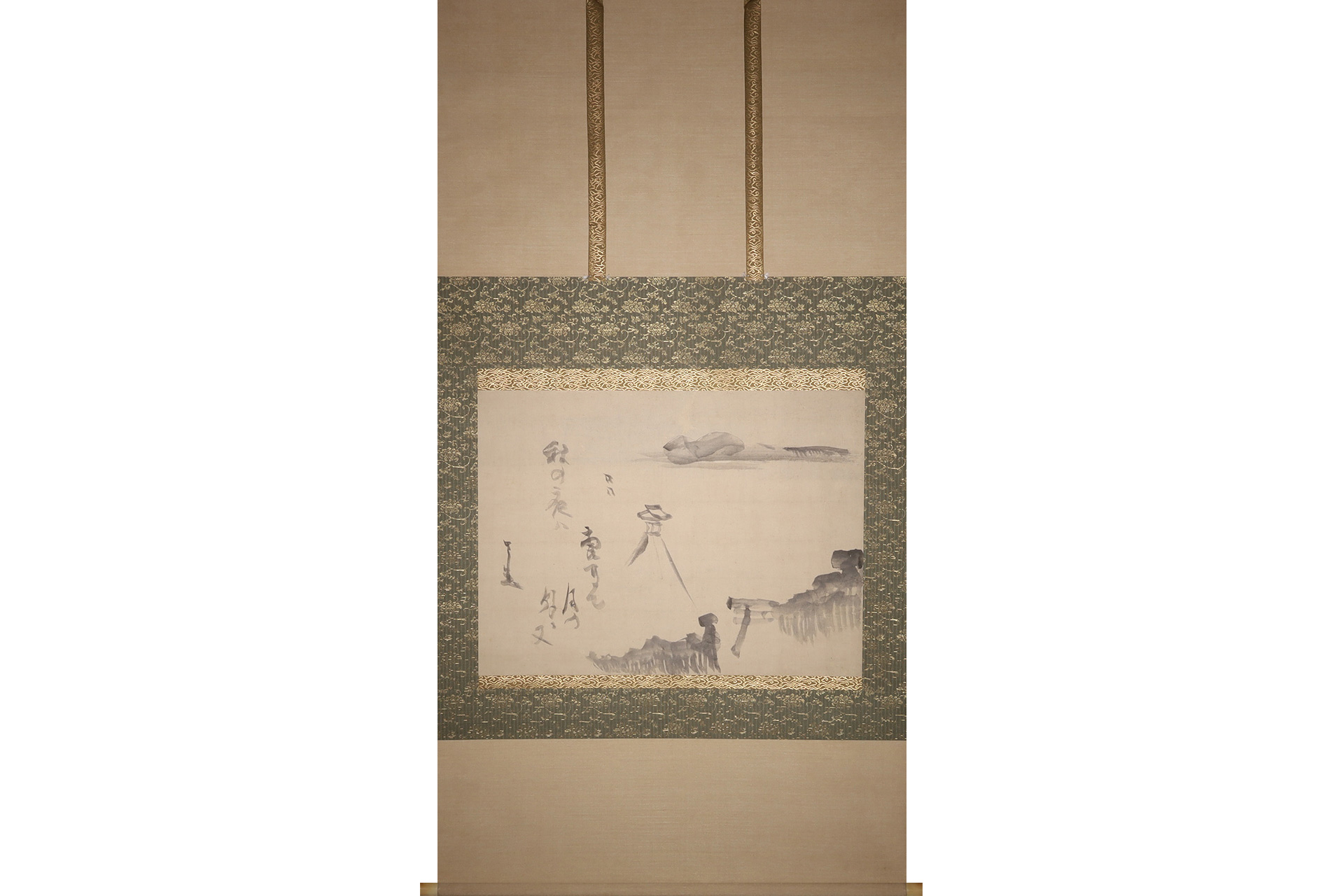
「Akinoyoha Karamatetsukino Sotonimata」. It is reminiscent of the majestic scenery of the chinese continent stretching out beyond the ocean, and seems to be a nod to the zen monks who traveled to china.
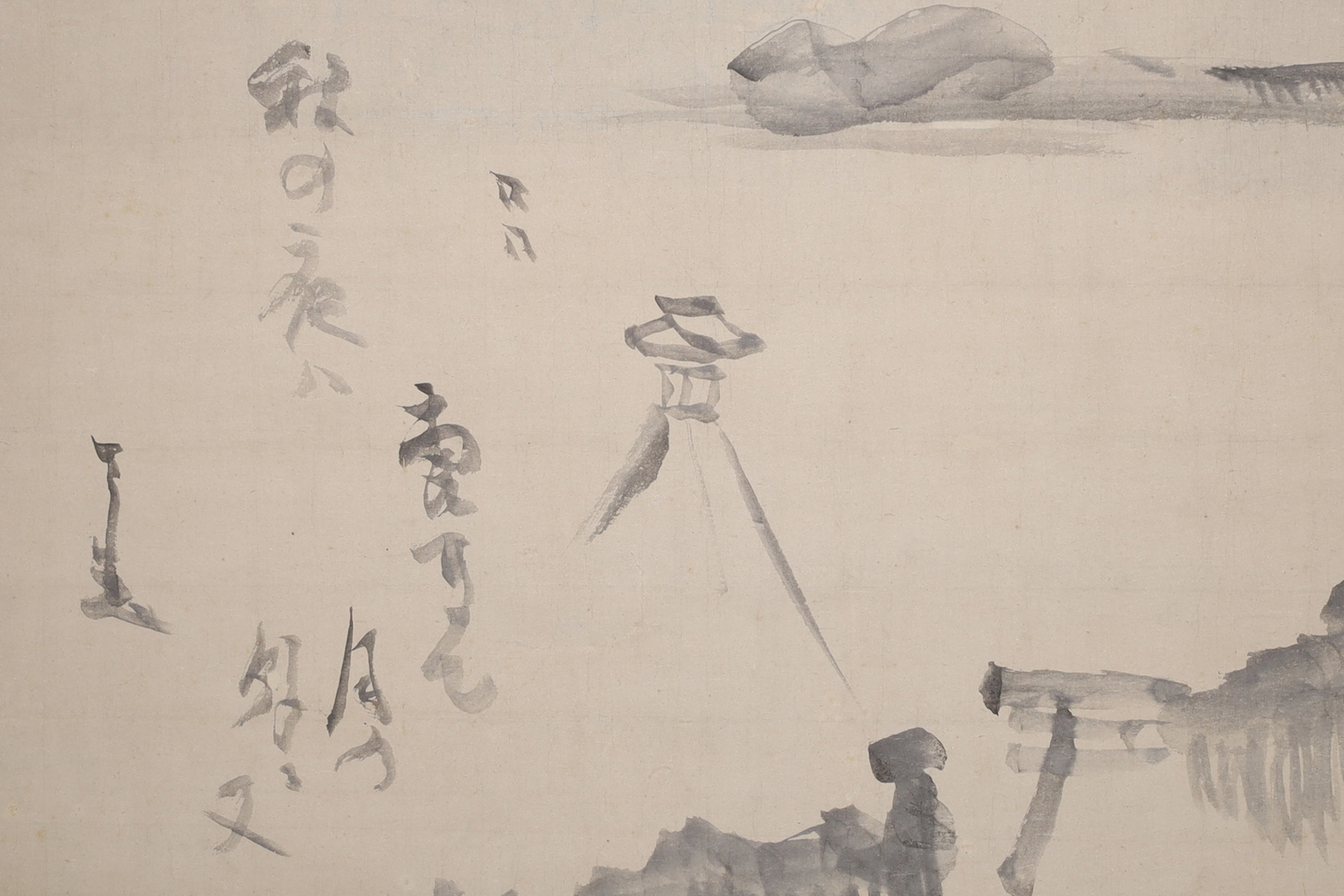
This is the venerable work that has passed through the strict aesthetic eye of Miyake Syukodo, a famous connoisseur of sengai.
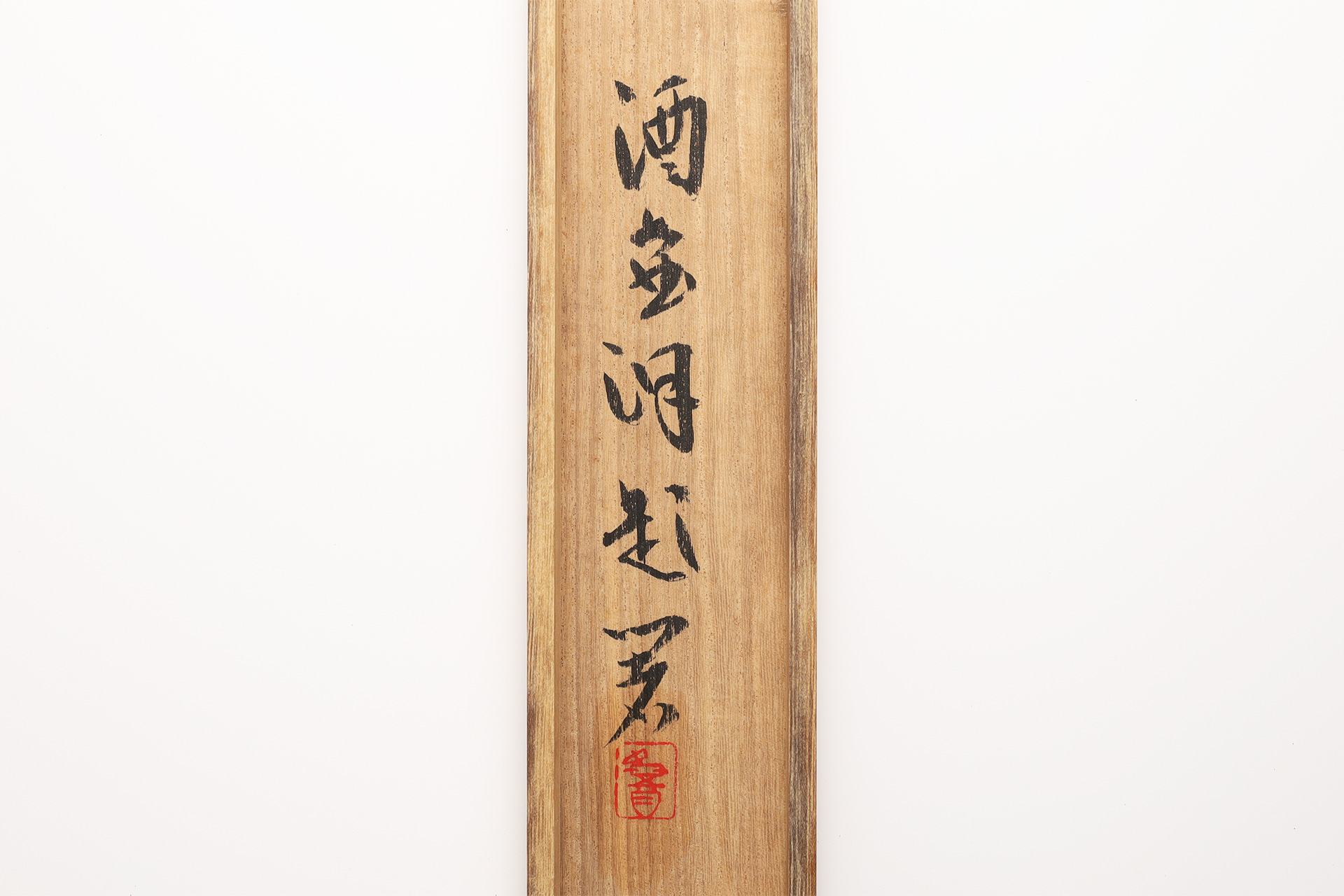
It was appraised in september 1971.
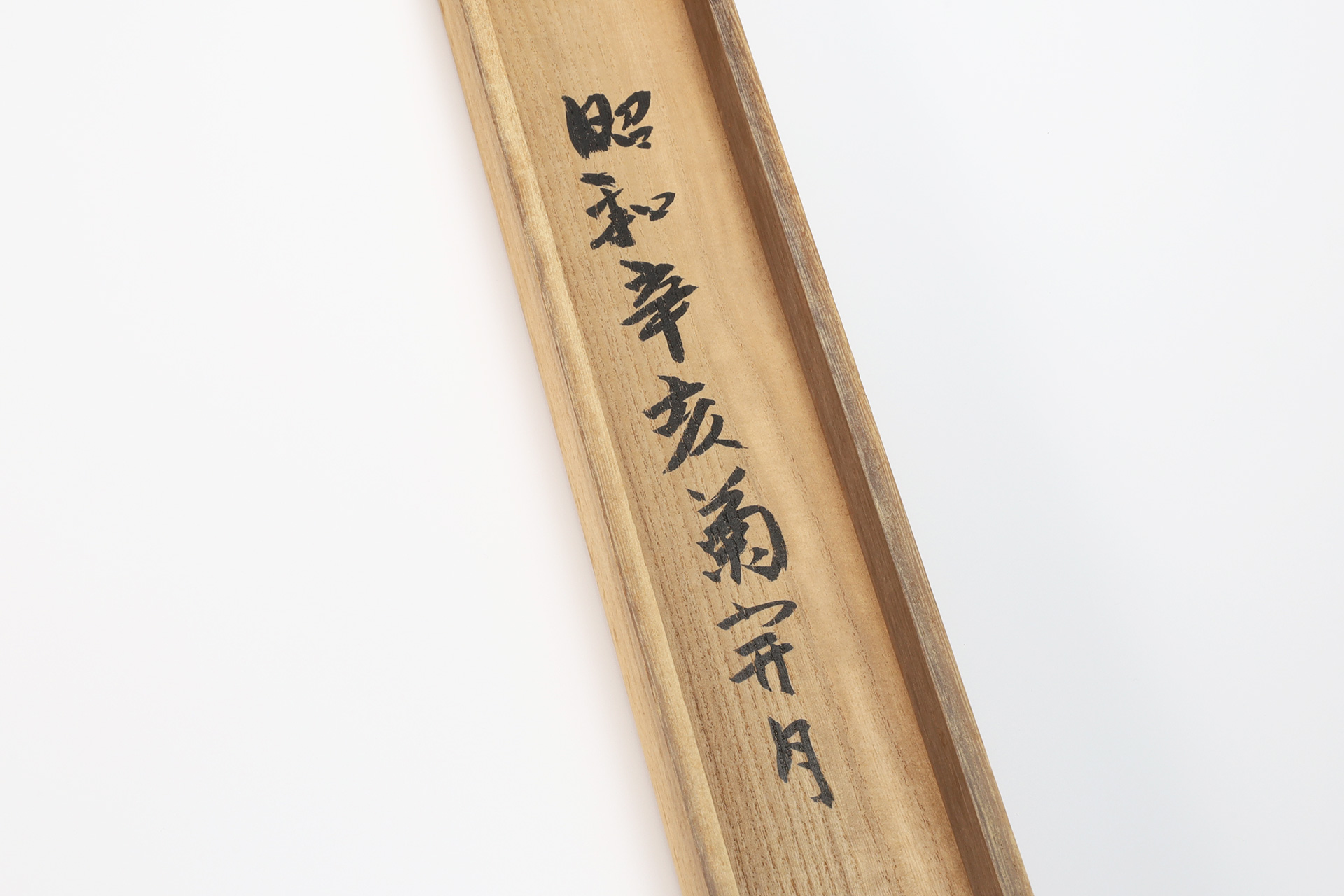
Sengai Gibon 1750-1837
Sengai Gibon was born in mino province(gifu prefecture).
Name is Gibon, alias Sengai.
In 1760, entered at seitai-ji temple. Sengai’s academic ambitions and interest in painting were nurtured in this environment, giving him the opportunity to enter toki-an.
In 1768, trained at toki-an in Yokohama.
In 1789, became the 123th chief priest of shofuku-ji temple.
In 1811, handed over the position of chief priest to his disciple Tangen Toi and retired. After turning 60, Sengai’s painting technique and sensibility became more refined, and a light hearted, humorous style began to emerge. He developed deep friendships with the people of hakata and left behind numerous calligraphy and paintings in response to their demand. The subject matter of his paintings also became richer, with the addition of everyday life of common people, landscapes, etc. Surrounded by loved ones and immersed in calligraphy and painting, Sengai’s work gained a growing reputation, but even he seemed troubled by the seemingly endless requests, and in 1832 he turned down all of them. However, requests for calligraphy continued unabated, and Sengai continued to write after that.
In his final years, he had no time to devote himself to painting and calligraphy, in 1836 his disciple Tangen, who had been entrusted with the major project of rebuilding shofuku-ji temple, incurred the wrath of the kuroda clan, and was ordered to resign from his position at shofuku-ji temple and exiled. Sengai was forced to reappoint himself as the chief priest of shofuku-ji temple, and became the 125th chief priest of shofuku-ji temple. He was elderly at the time, and the exile of Tangen, who he had looked forward to a promising future for, was a great sorrow for Sengai.
In 1837, passed away after submitting his petition for retirement.
He was affectionately known as “Sengai-san” by the local people, and he preached the way humans should behave while making people laugh by instilling deep lessons in his funny stories and light hearted drawings. He gave harsh warnings to arrogant samurai who used their power to their advantage, know it all scholars, and buddhist monks who did not serve others, and he was a virtuous man who was not afraid to do anything to fulfill his belief in right, yet was also kind and compassionate to people.
Miyake Syukodo 1902-1982
Miyake Syukodo was born in fukuoka prefecture.
Real name is Yasutaro.
The name “Syukodo” comes from the fact that the family business before the war was a sake shop.



